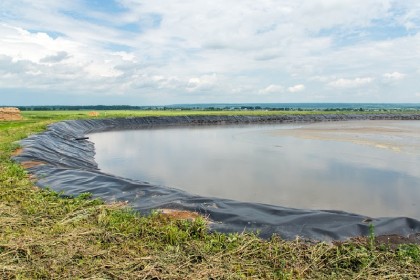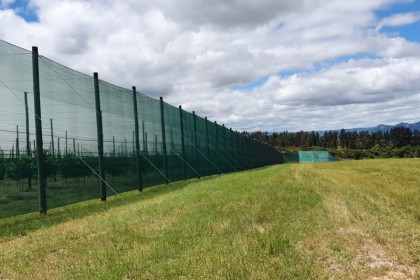
Bacterial Diseases In Dry Beans
Hendri Strydom
The prevalence of bacterial diseases in general is gaining momentum in the agricultural sector. It is important that agents and farmers take notice and pay attention to these diseases due to the fact that the diseases can very quickly destroy crops. There are a few control options and the damage that is caused in an advanced growth stage of the plant can directly affect the crop yield.
What causes the greatest possible damage to the crop yield is that the most common fungal and bacterial diseases that occur when the plant's natural
resistance is not functioning optimally. This happens when the plant enters the reproductive growth phase. At this stage, the plant uses energy, including stored energy, to produce good flower set, which will result in a good pod formation and harvest. The plant thus channels the limited energy at its disposal to the reproductive functions, which means that the plant's natural resistance system is compromised. This opens the door for opportunistic fungi and bacterial pathogens.
On dry beans, the trend is the same. Bacterial diseases, especially Common blight usually infect the plants at the onset of flowering. Halo blight can be observed even earlier if there are cool night temperatures.
The three main bacterial diseases on dry beans in S.A. are: Common blight (Xanthomonas axonopodis pv. phaseoli), Halo blight (Pseudomonas savastanoi pv. phaseolicola) and Bacterial brown spot (Pseudomonas syringae pv. syringae).
Common blight
Common blight is a warm-weather disease (temperature above 26 ° C) and the pathogen prefers high humidity conditions. Leaf symptoms appear as large, irregular necrotic lesions surrounded by a bright yellow border. Leaf infection can affect a large part of the leaf surface. Pod symptoms begin as water-soaked lesions with
a secretion of a fluid. The lesions dry out over time and change colour to brown / reddish round lesions. Pod lesions can adversely affect the shape and size of the beans within the pod.
Halo blight
This disease is a cold-weather problem (below 26 ° C), and occurs with high humidity (above 95%) for longer than 24 hours. Symptoms are usually more visible on the bottom of young leaves as small round water-soaked lesions which later become necrotic and brown in colour. Leaf symptoms usually appear approximately one week after infection.
On the pods, the symptoms also appear as small water-soaked lesions of different sizes. The lesions usually remain green on the dry pods. Lesions on the pods can affect the appearance and size of the beans.
Bacterial brown spot
This pathogen prefers moderate temperatures (26°C) with a high humidity (above 95%) for longer than 24 hours. The symptoms of the disease on the leaves manifest as small, irregular waterborne patches with a light green rim surrounding the lesions. As the lesions age, the colour changes to brown. Very characteristic of brown spot is that the lesions often fall from the leaves that give a more varied “shot hole” appearance. Lesions on the leaves also appear initially on the underside of young leaves.
Symptoms on pods appear as brown, round lesions. The lesions on the pods can affect the shape and appearance of the beans inside the pod.
Preventative control measures for the three bacterial diseases:
- The most important and most effective preventive control is to plant only disease-free, certified seed. All three pathogens are seed-borne.
- Plant resistant cultivars as far as possible.
- Keep plants healthy. Plants under stress typically have lower resistance, which increases the risk of infection.
- Apply copper fungicides at the end of the vegetative growth stage, or at the beginning of flowering. If conditions are favourable for Halo blight, the copper sprays can be done even earlier.
- If hail, severe wind or any mechanical damage occurs to the plants, a copper spray should be applied to limit infection points for bacterial diseases.
- Cultivate dry bean lands after harvest to destroy the contaminated crops by composting.
- Follow an effective weed control program to remove any other potential hosts.
- Follow an effective crop rotation system with a non-host crop to fight these diseases.
Sources:
1. Colorado State University, Extension. Crop series, Fact sheet No. 2913. Bacterial diseases of Beans.
2. Muedi, T.H., Fourie, D., N.W. Mclaren, N.W. (25 July 2014), Distribution and severity of bacterial brown spot-on dry beans in South Africa: An update., Research article. Agricultural Research Council (ARC - Grain Crop Institute.
3. Muedi, T.H., Fourie, D., (2014, February) Bacterial diseases of dry beans: Every producer’s worst nightmare. Retrieved from: https://www.grainsa.co.za/bacterial-diseases-of-dry -beans: -every-producer-s-nightmare
For more agricultural products and services, click here.












